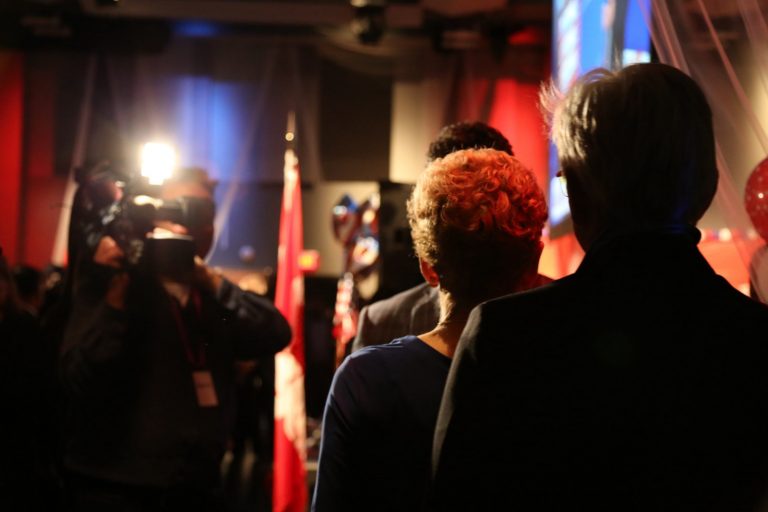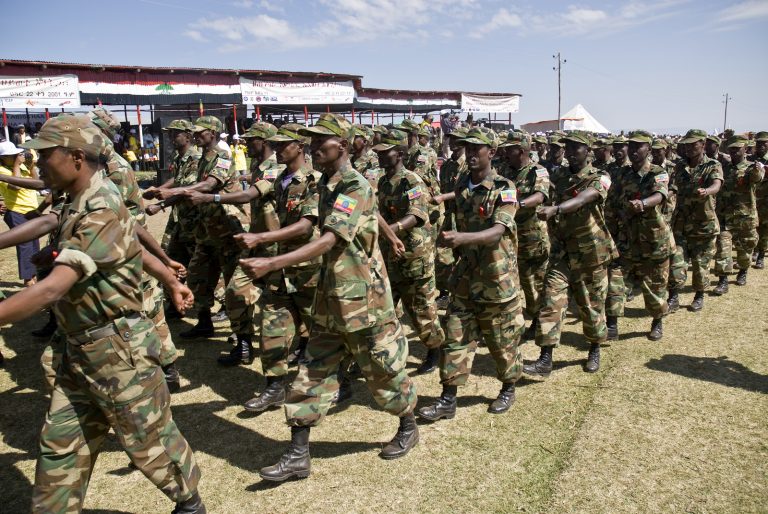The Technological Future of Peacebuilding
PeaceTechLab, an independent nonprofit, conducts pioneering work to utilize technology in building peace around the globe. President and CEO Sheldon Himelfarb offers his thoughts on the most groundbreaking aspects of the organization and where peacebuilding technologies are having the greatest effect.
Q: How was PeaceTechLab first formed - how did it get off the ground and what was the initial impetus for its formation?
A: PeaceTechLab was spun out by the US Institute of Peace, which has long recognized the importance of and participated in media and technology initiatives with peacebuilding goals. Over its 30 years, USIP has been trying to drive forward the expansion and innovation of technology’s capacity for peacebuilding, as it allows a peacebuilder to reach so many more people than other peacebuilding techniques, such as training or negotiations.
Additionally, there was recognition around three years ago that technology was inflecting everyone’s work in this field to a greater extent than ever before. There wasn’t a single problem being worked on at USIP - whether it was preventing election violence, corruption, gender violence or resource scarcity and so on – that wasn’t being touched by technological developments. As a result, the USIP wanted to ‘double down’ on how to amplify technology for peacebuilding above the potentiality for technology to do harm.
The core concept of the Lab is to enable new partnerships with the private sector as well as innovative financing strategies that are traditionally difficult to do as a government body. The PeaceTechLab as an independent NGO has more latitude in these areas.
Q: Could you briefly highlight the most significant projects currently being undertaken at PeaceTechLab, and the ones you personally are most excited about.
A: PeaceTech Exchanges, which involves entering conflict areas – Iraq, Afghanistan, Myanmar – and working with local civil society organizations that are seeking to promote reconciliation over conflict and greater government accountability. The idea here is to introduce existing civil society organizations, already doing great work, to new tools that help them do more, do it better and do it faster. Local technology organizations assist us with this, because they understand what is available and how best to use it in this environment. By the end of this year, PeaceTech Exchanges will have been undertaken in 15 different countries.
When we are out in conflict zones, working with different partners, we are able to identify promising uses for tech in peacebuilding. In partnership with organizations such as Amazon Web Services and C5 Accelerate, we have built a peace tech accelerator where we bring the most promising ideas in peace tech to Washington. There we work with the startups to provide them with the support necessary to succeed -- from training on how to build a leadership team, how to construct and execute on a business plan all the way to getting these peacetech initiatives in front of the right investors who can support their work.
Also never underestimate how significant data is for peacebuilding today. We’ve invested in a project called groundTruth Global, which aggregates data from social media, sensors, satellites, data and from all kinds of other sources and then uses analytics to understand how to leverage this treasure trove for new early warning insights on social and economic disruption in conflict zones. groundTruth Global is truly state of the art in the way that it leverages machine learning, multi-lingual processing, artificial intelligence and other tools.
Our collaboration with Drexel University’s College of Engineering has also acted as a major partnership initiative for PeaceTech Lab. We work with them to modify USIP’s peacebuilding and conflict analysis curriculum and adapt it. These courses are ultimately at the core of Drexel’s bold initiative to offer the nation’s first master’s degree in ‘Peace Engineering’. We need more people with technical skills in this field, not just the social scientists who understand conflict -- and this is one way to get it.
Q: One of the most significant projects undertaken by PeaceTechLab was in South Sudan in 2013 and countering hate speech. Could you summarize the methodology used in this project? How is hate speech identified?
A: Hate speech is not new – it’s been around for as long as conflict has been around. It has taken a turn for the worse in South Sudan through ICT technologies allowing hate speech to take place at a greater speed and volume than before. This can’t just be taken on with alternative messaging; more foundational work needs to take place.
The project we undertook involved working with local partners to aggregate examples of hate speech and develop a robust lexicon to identify it. This was then used to train on the ground partners and tailor existing tools to identify hate speech, which often operated in coded language. We also conducted analysis to correlate the use of hate speech and actual violence that took place, to draw a line leading from one to the other that was not anecdotal.
Q: There is a significant body of research that suggests greater access to ICT technologies in conflict zones has in some cases exacerbated violence. Do you agree with this assessment? What are the best ways to mitigate against this possibility?
A: I’m familiar with some of the research you’re referring to, and there’s no question that technology is a tool that can be used for evil as well as good. I’ve also seen really compelling research showing that high penetration of ICT in societies is an important component of a culture of free expression and transparency that exposes corruption on bad governance.
There is no single narrative that technology is either spurring on conflict or helping to prevent it. What is clear, however, is that we have to do a lot more investment in amplifying the tools at hand that are able to build peace.
Sheldon Himelfarb is the CEO of PeaceTech Lab and a former foreign policy advisor to a member of the Senate Foreign Relations Committee. He was previously the CEO of Common Ground Productions and has managed multiple peacekeeping programs in warzones in Bosnia, Iraq, Angola, Libya and Macedonia.




